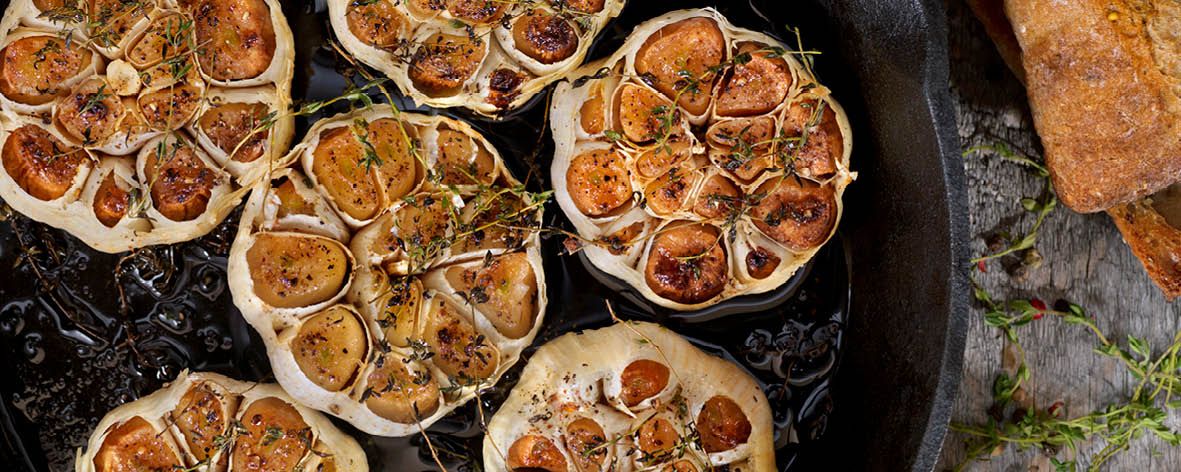All you need to know about … garlic

Garlic is one of those unassuming kitchen ingredients that has the ability to lift the flavour of almost any savoury dish to a whole new level of tasty. Here are our tips for getting the best results when cooking with garlic:
1. Preparation
Chopping, slicing and mincing are probably the most common methods used in preparing garlic cloves for cooking but there are other ways. One of our favourites is to grate with a microplane because it turns the garlic into small, fluffier pieces that incorporate easily into your dishes. This is a really good technique for adding garlic to dressings and aioli where texture is important. If you are just after a little garlicky kick, you don’t need to chop, slice, or grate it. Just smash it with the handle or edge of a knife then remove the papery skin. Add it to the pan and let the crushed clove release its wonderfully smelly essence into the oil and whatever else you’re cooking. Just make sure to remove it before serving otherwise the whole clove will taste raw. If you’re cooking for longer, it’s ok to leave it in as the sharp, raw flavour will have time to mellow.
2. Timing is everything
Garlic burns easily, especially when chopped or sliced. For sautés and stir-fries, we recommend not adding it to the pan until mid-way through the recipe. This means that there is less time for the garlic to become burnt and you’ll have a nice bed (of onions, greens etc) to cushion it from the hot pan. For sauces, you can add the garlic early so long as you sauté it quickly then add the liquid element to bring down the temperature of the pot and prevent the garlic burning.
3. Not too cold, not to hot … just right
Be careful with temperature when cooking garlic. It is much better to start the pan at a lower heat and gradually dial up than to start too high and end up with a crispy, burnt mess. The same applies to roasting garlic. A whole head of garlic that’s been cut, drizzled with oil, and wrapped in foil then baked in an oven turns sweet, creamy, and spreadable (see our recipe below), but keep the temperature low or the outer edges will burn before it has time to soften.
4. Buying garlic in a jar
Call us purists but honestly, the stuff in jars is best reserved for an absolute garlic emergency. Instead try our easy recipe for roasted garlic here and keep a supply on hand to add that delicious flavour to your meals.

